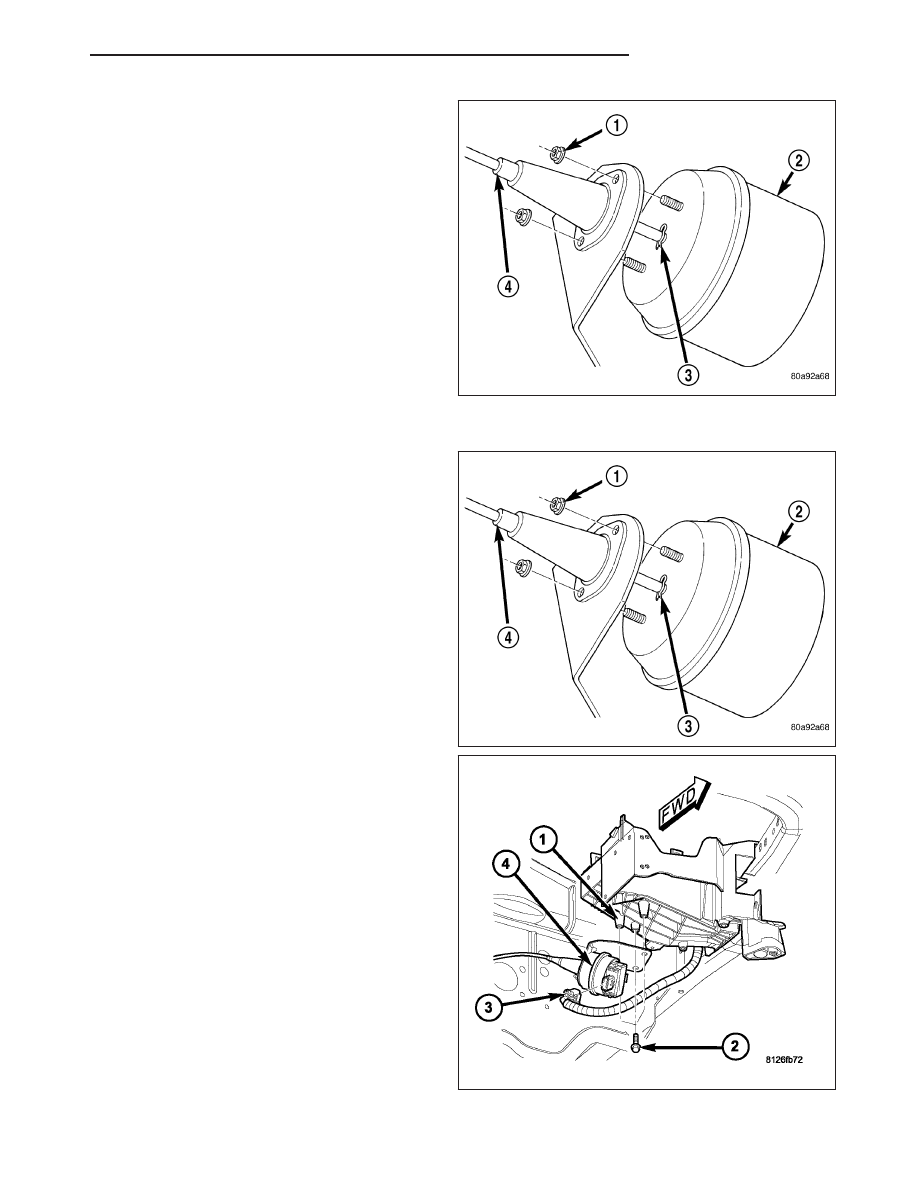Dodge Durango (HB). Manual - part 569

6. Remove 2 mounting nuts (1) holding servo cable
sleeve (4) to bracket.
7. Pull speed control cable sleeve and servo away
from servo mounting bracket to expose cable
retaining clip (3) and remove clip. Note: The servo
mounting bracket displayed is a typical bracket and
may/may not be applicable to this model vehicle.
8. Remove servo (2) from mounting bracket. While
removing, note orientation of servo to bracket.
INSTALLATION
1. Position servo (2) to mounting bracket.
2. Align hole in cable connector with hole in servo
pin. Install cable-to-servo retaining clip (3)..
3. Insert servo mounting studs through holes in servo
mounting bracket.
4. Install two servo-to-mounting bracket nuts (1) and
tighten. Refer to torque specifications.
5. Position servo assembly (4) to correct mounting
lugs on bottom of PDC (1) and install 3 screws.
Tighten 3 screws. Refer to torque specifications.
6. Connect vacuum line at servo.
7. Connect electrical connector at servo.
8. Connect servo cable to throttle body. Refer to
Servo Cable Removal/Installation.
9. Connect negative battery cable to battery.
10. Before starting engine, operate accelerator pedal
to check for any binding.
HB
SPEED CONTROL
8P - 7